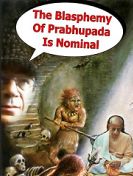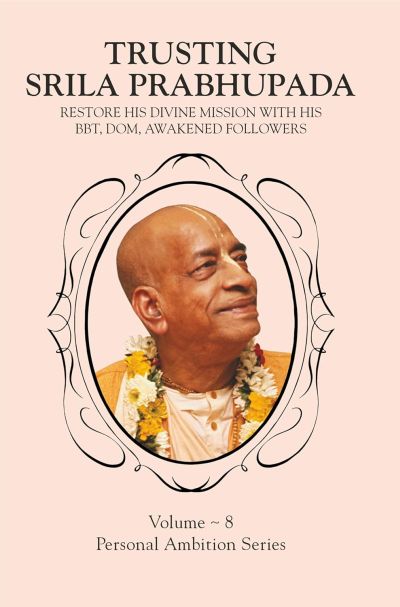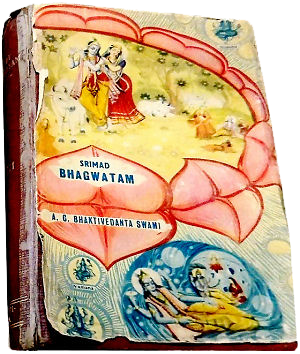
‘dvitīya catur-vyūha’ ei–turīya, viśuddha
dehās tasya parātmanaḥ
hānopādāna-rahitā
naiva prakṛti-jāḥ kvacit
nīla-pītādibhir yutaḥ
rūpa-bhedam avāpnoti
dhyāna-bhedāt tathācyutaḥ
vapuṣā yugapat pṛthak
gṛheṣu dvy-aṣṭa-sāhasraṁ
striya eka udāvahat
nirguṇaḥ puruṣottamaḥ
ekī-bhūya punaḥ śete
nirdoṣo harir ādi-kṛt
sthūlo ‘ṇuś caiva sarvataḥ
avarṇaḥ sarvataḥ proktaḥ
śyāmo raktānta-locanaḥ
durgāśrayo ‘thāri-bhayāt palāyanam
kālātmano yat pramadā-yutāśrayaḥ
svātman-rateḥ khidyati dhīr vidām iha
pūrṇāt pūrṇam udacyate
pūrṇasya pūrṇam ādāya
pūrṇam evāvaśiṣyate
bhārataṁ pañcarātrakam
mūla-rāmāyaṇaṁ caiva
veda ity eva śabditāḥ
vaiṣṇavāni vido viduḥ
svataḥ-prāmāṇyam eteṣāṁ
nātra kiñcid vicāryate
The Ṛg Veda, Yajur Veda, Sāma Veda, Atharva Veda, Mahābhārata, Pañcarātra and original Rāmāyaṇa are all considered Vedic literature. The Purāṇas (such as the Brahma-vaivarta Purāṇa, Nāradīya Purāṇa, Viṣṇu Purāṇa and Bhāgavata Purāṇa) are especially meant for Vaiṣṇavas and are also Vedic literature. As such, whatever is stated within the Purāṇas, Mahābhārata and Rāmāyaṇa is self-evident. There is no need for interpretation. The Bhagavad-gītā is also within the Mahābhārata; therefore all the statements of the Bhagavad-gītā are self-evident. There is no need for interpretation, and if we do interpret, the entire authority of the Vedic literature is lost. Sri Caitanya-caritamrta – 1975 Edition : Cc. Madhya-lila : Madhya 6:
Śrīla Bhaktisiddhānta Sarasvatī Ṭhākura points out that the word “Tattvavādī” refers to the followers of Śrīla Madhvācārya. To distinguish his disciplic succession from the Māyāvādī followers of Śaṅkarācārya, Śrīla Madhvācārya named his party the Tattvavādīs. Impersonal monists are always attacked by these Tattvavādīs, who attempt to defeat their philosophy of impersonalism. Generally, they establish the supremacy of the Supreme Personality of Godhead. Actually the disciplic succession of Madhvācārya is known as the Brahmā Vaiṣṇava sect; that is the sect coming down from Lord Brahmā. Consequently the Tattvavādīs, or followers of Madhvācārya, do not accept the incident of Lord Brahmā’s illusion, which is recorded in the Tenth Canto of Śrīmad-Bhāgavatam. Śrīla Madhvācārya has purposefully avoided commenting on that portion of Śrīmad-Bhāgavatam in which brahma-mohana, the illusion of Lord Brahmā, is mentioned. Śrīla Mādhavendra Purī was one of the ācāryas in the Tattvavāda disciplic succession, and he established the ultimate goal of transcendentalism to be attainment of pure devotional service, love of Godhead. Those Vaiṣṇavas belonging to the Gauḍīya-sampradāya, the disciplic succession following Śrī Caitanya Mahāprabhu, are distinct from the Tattvavādīs, although they belong to the same Tattvavāda-sampradāya. The followers of Śrī Caitanya Mahāprabhu are therefore known as the Madhva-Gauḍīya-sampradāya.
The word pāṣaṇḍī refers to those who are opposed to pure devotional service. In particular, these are the Māyāvādīs, the impersonalists. A definition of pāṣaṇḍī is given in the Hari-bhakti-vilāsa (1.73), wherein it is stated:
brahma-rudrādi-daivataiḥ
samatvenaiva vīkṣeta
sa pāṣaṇḍī bhaved dhruvam
A pāṣaṇḍī is one who thinks that the Supreme Lord Nārāyaṇa, the Personality of Godhead, is on the same level with the demigods, headed by Lord Brahmā and Lord Śiva. The devotee never considers Lord Nārāyaṇa to be on the same platform with Lord Brahmā and Lord Śiva. TheMadhvācārya-sampradāya and Rāmānuja-sampradāya are mainly worshipers of Lord Rāmacandra, although the Śrī Vaiṣṇavas are supposed to be worshipers of Lord Nārāyaṇa and Lakṣmī and the Tattvavādīs are supposed to be worshipers of Lord Kṛṣṇa. At present, in most of the monasteries belonging to the Madhva-sampradāya, Lord Rāmacandra is worshiped.
Books: Sri Caitanya-caritamrta – 1975 Edition : Cc. Adi-lila : Adi 5: The Glories of Lord Nityananda Balarama : Adi 5.41 :
“Books : Sri Caitanya-caritamrta – 1975 Edition : Cc. Adi-lila : Adi 7: Lord Caitanya in Five Features : Adi 7.128 : TRANSLATION







Speak Your Mind